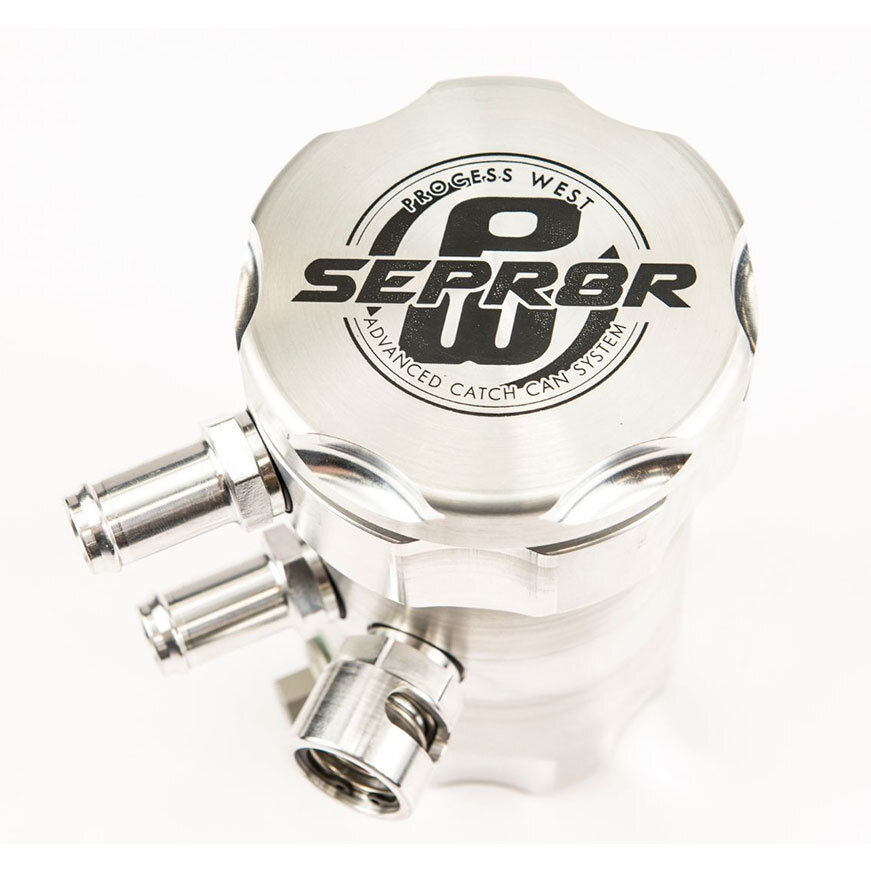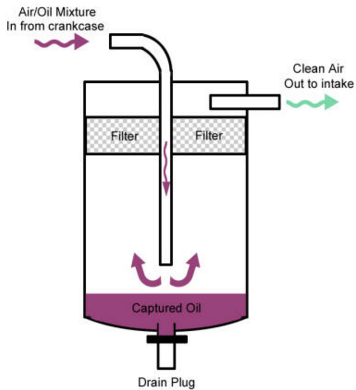Catch Cans - What do they do, and do I need one?
There are many brands of catch cans on the market. There is also a lot of conflicting information available online and it can be difficult to make sense of it all. This write-up is for those that might want to know a bit more about their purpose and how they work to assist in informing a decision on wether you should or shouldn’t fit one to your vehicle.
If only certain aspects of this article interest or apply to you, please feel free to skip ahead to the different sub sections.
What is a catch can?
A catch can is technically an oil/air separator. Catch cans / oil separators are used to separate oil droplets from the air circulating from the engine breather and then through the intake system.
Why is oil getting into the intake system of my vehicle in the first place?
Internal combustion engines aren’t perfect. When pressure is built up in the combustion chamber, some of this cylinder pressure will always find its way into the oil pan / crankcase. This is known as positive crankcase pressure. The same properties that keep engine friction low mean that the piston rings do not create a perfect seal against the cylinder wall. When this pressurised air is mixed with a spinning crankshaft and other hot, fast-moving internal engine components, oil droplets are partially vaporised. This pressure needs to escape somehow via a ventilation system (positive crankcase ventilation valve / PCV).
These vaporised oil particles escape through the PCV and as they contain contaminants that are a byproduct of combustion, they are required by emissions laws to be re-directed back into the engines intake system and processed through the emission control devices in the exhaust system.
While this is necessary to reduce air pollution and abide by regulations, it’s not great news for the intake system.
How does a catch can work?
A catch can is an addition to the breather hose between the PCV & the intake system. This breather hose from the PCV is disconnected from the air intake and either replaced or connected directly to the input of the catch can. The air is directed into the bottom of the catch can through a tube and then returned back to the top of the catch can and towards the outlet after passing through a filter. From the outlet, a hose is connected which then completes the circuit and is reconnected to the air intake port. As the air passes through the catch can filter, any oil particles are trapped in the filter element and pool together into larger droplets before falling into the bottom of the catch can. Most catch cans are fitted with a drain plug to remove this oil catchment periodically. Usually they should not require emptying between normal engine service intervals.
What is the purpose of fitting one to my vehicle?
Another emissions device that many vehicles have fitted is EGR (exhaust gas recirculation). Exhaust gasses are returned through the engines intake to allow for remaining hydrocarbons to be combusted prior to entering the atmosphere.
The problem with this is that sooty exhaust particles and oil vapours when mixed together over time, turn into a messy black sludge of carbon deposits (See image on right). These eventually result in poor engine performance and require removal of the intake manifold and an extensive amount of labour to clean and remove these deposits.
There are two ways to easily reduce carbon build-up. EGR blank-off plates are a common modification, however are illegal for road use and can often bring on engine warning lights in some vehicles without further tuning or modification. Fitment of a catch can is the most effective way to reduce this, without jeopardising the integrity of the emissions system or causing legality issues.
Why doesn’t my new car have one fitted from factory?
Put simply - manufacturing cost & increased maintenance.
Vehicle manufacturers scrutinise every last bolt that is fitted to a new vehicle. When building hundreds of thousands, or even millions of the same vehicle, a single bolt adds up to a lot of money.
The simple fact is, the issues that arise from not having a catch can fitted often arise after the warranty period is over. The maintenance of emptying a catch can is also extra labour for the dealer mechanics to perform.
Why were they not around years ago?
Years ago, a lot of engine systems had crankcase breathers that vented direct to atmosphere. As emissions laws became more strict, these breathers were plumbed back into the intake system. In most cases this wasn’t too much of an issue, but as mentioned above - as EGR systems entered the market through tighter emissions requirements, carbon build up became an issue. Especially in modern diesel engines with higher crankcase pressures.
What is the difference between the different brand catch cans available?
Any catch can is better than no catch can. However - flow, filtration, mounting location and maintenance requirements all differ between models. There are various tests comparing brands that can be found online if you would like more information on this.
The three most common kits that we supply & fit in our own workshop include the Direction Plus Provent 200, Process West Sepr8r & Ryco RCC351.
The Provent 200 is a black, plastic housing kit which is available with vehicle-specific mounting brackets and contains a replaceable paper style filter and drain hose / tap. Often the cheaper option but a great all-rounder.
Sepr8r kits are made within a billet alloy housing, with moulded factory-style hoses and vehicle specific mounting brackets for certain models. A long-life heavy duty filter is included and these kits are a great option if available for your vehicle.
Ryco kits have been lab tested to exceed the performance of other filters on the market at the time of R&D. Vehicle specific brackets are being released periodically.
How do I fit one to my car? Do I need any special tools or qualifications to do it myself?
With a small amount of mechanical ability and a basic selection of hand tools, fitting a vehicle-specific kit can be a great weekend project. There are a few things to be aware of however when mounting and routing hoses, so if you aren’t completely confident it’s best to speak to a technician first or book in with a workshop.
If you would like a quote on a catch can kit for your vehicle, or have any questions at all please don’t hesitate to use the “contact us” form at the top of your screen!




